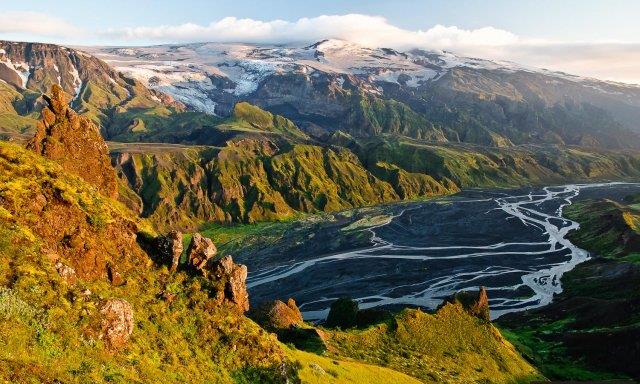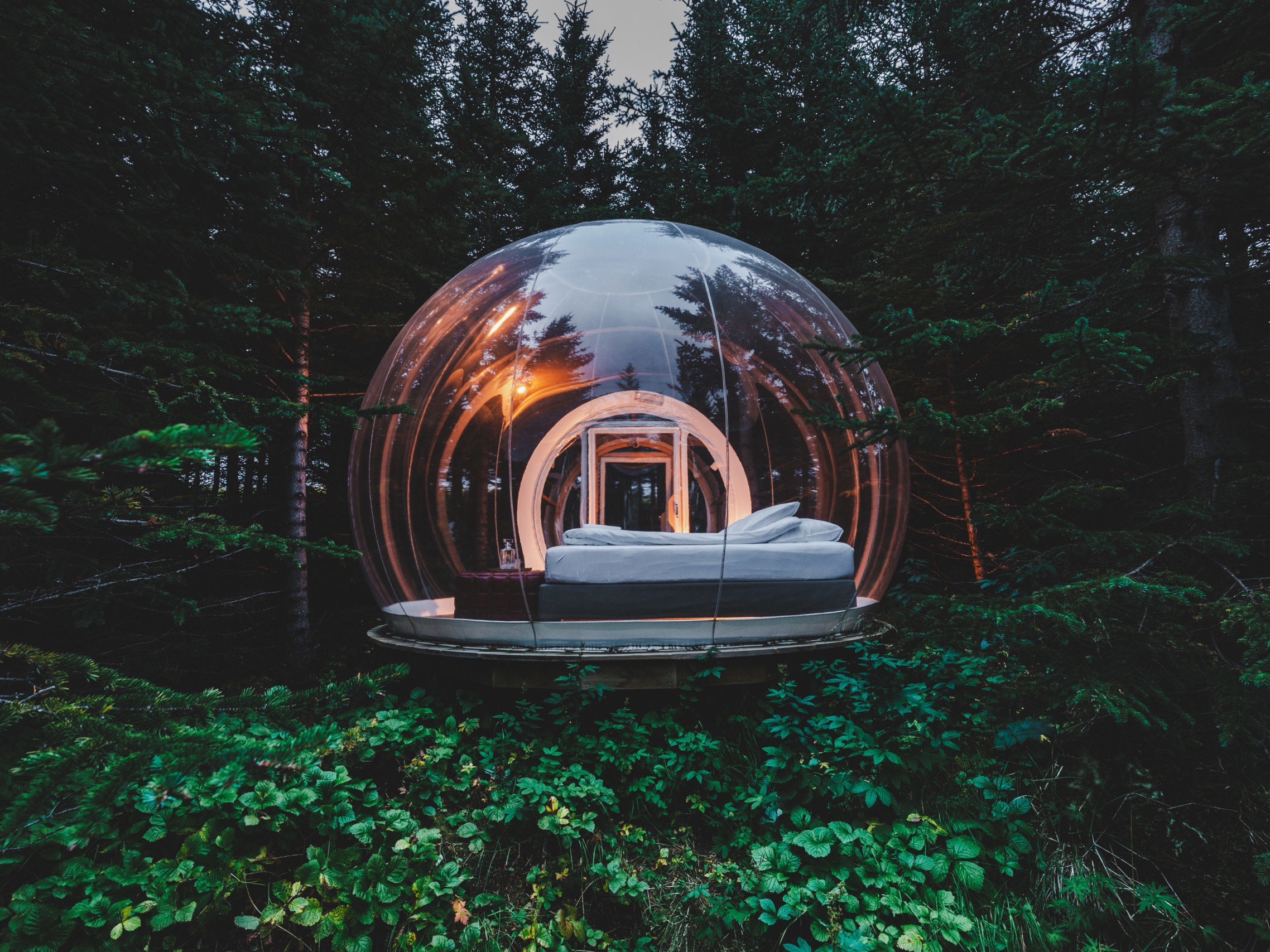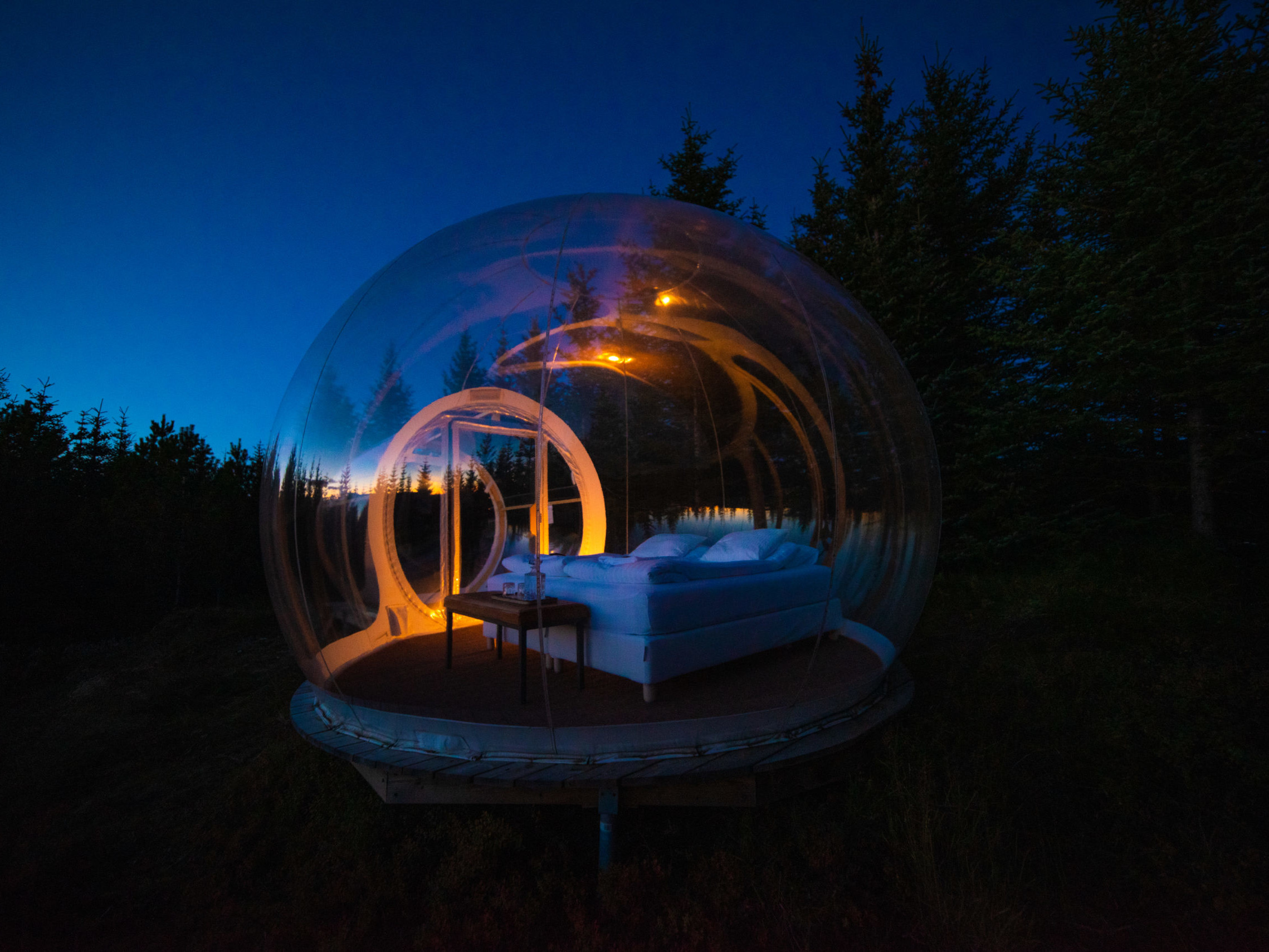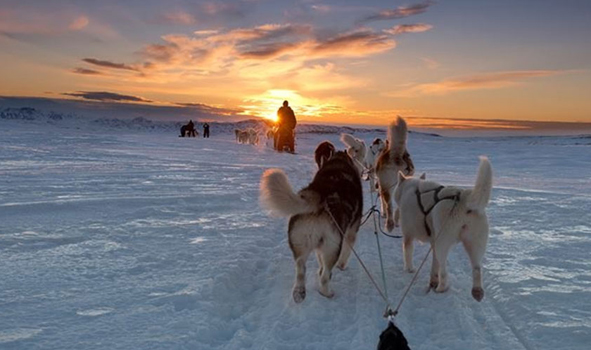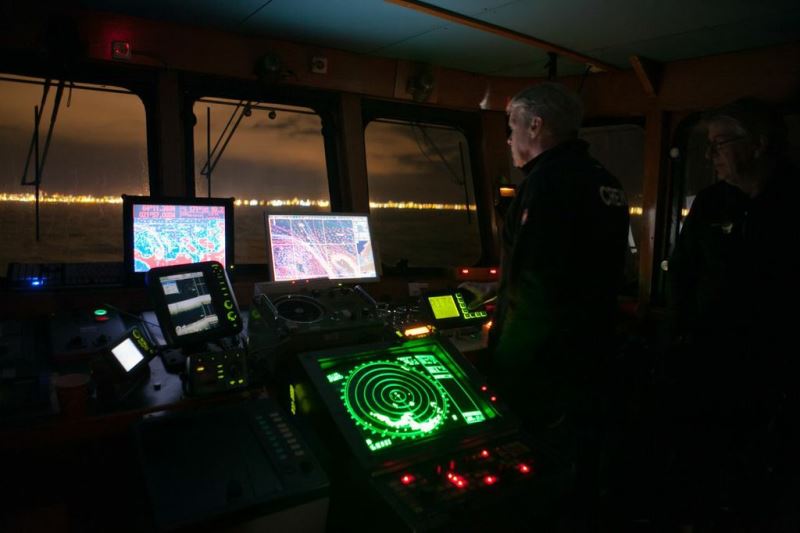What I wish I had known
What I Wish I Had Known About Iceland
In recent years, the number of travellers visiting Iceland has increased enormously. Summer isn´t anymore the most popular time to visit Iceland, all other months of the year have also gained popularity. Even though many travellers arrive well prepared and have read a lot about the country, there are some things you just can´t find online and tourists wish they had known before arrival. We asked tourists what they would have like to know before they arrived. We have summed up a few of the answers for you so you will have a little extra knowledge when you arrive!
“I didn´t know how accessible Iceland is”
To many it is a surprise how easy it is to drive the ring road. You can make stops at so many lovely places, spend the night at various guesthouses and hotels around the country, and you can enjoy the country to the fullest in your own time. In winter the ring road is usually open. However, if you aren´t used to driving in snow and on slippery roads, then tours might be a better choice for you.
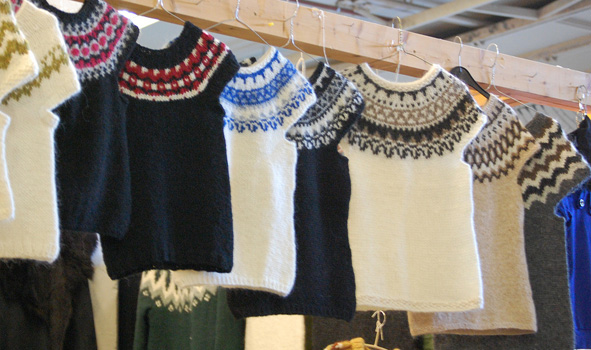
“I wish I had realized to bring normal clothing to wear in the city”
Icelanders dress very normally and it is like they almost ignore the cold. It is truly not necessary to wear hiking gear in Reykjavik and I wish I had known that before I arrived. It is not as cold as it can get in winter in central Europe as the air is dry, not humid. So, next time around I will pack some normal winter clothing to blend in with the locals and leave the hiking gear for the tours out in the country!
“I wish I had known that alcohol can´t be bought in supermarkets”
In Iceland there are special government run stores (called Vínbúðin) and that is the only place where you can buy alcohol apart from bars and restaurants of course. I wish I had known that it is closed on Sundays and on public holidays. So, if you want to buy anything – beer, red wine or something stronger – make sure you go to the Vínbúð during opening hours. If you forget, then your only option is your local bar or restaurant if you want a glass of wine.
“I didn’t know that bottled water in Iceland is the exact same thing as tap water”
I´m used to travelling and everywhere I go I buy bottled water. When the locals in Iceland told me I was buying the exact same thing as I would get from the tap, I was very surprised. I decided to try the tap water and to make a long story short, the locals were right. Definitely the best tap water I´ve tasted!
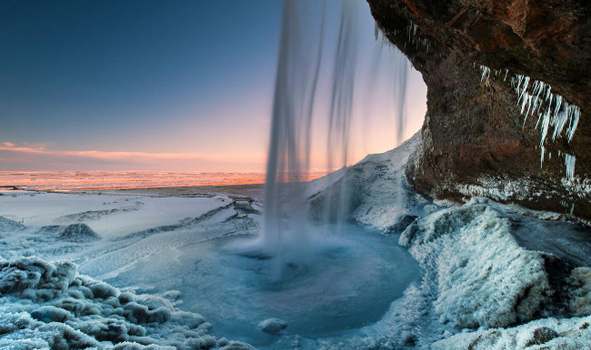
“I wish I had known how unspoiled the nature really is”
If someone had told me how the nature in Iceland is truly unspoiled, I would have definitey stayed longer and enjoyed some extra days out in the country. It is amazing how you can feel the nature all around you. It is unique!
“I didn’t realize how quickly the weather changes in Iceland”
It was a surprise how the weather chances quickly. You can get up in the morning and the ground is covered with snow. A few hours later the snow is gone and the sun is shining. You can even experience all in one day – snow, rain, sunshine, wind, no wind and hail! You truly need to be prepared for all sorts of weather, both in winter and in summer!
“All the beautiful photos online are real! The landscape and scenery is in reality truly breathtaking. However I never imagined how fresh the air would be!”
Before I finally decided to visit Iceland, I had browsed the internet and read book. All the beautiful picture you see are real. The scenery is breathtaking and the pure nature really blows you away. What I had never thought about was how truly pure everything is! The air in particular – not a hint of pollution, especially when you leave the capital. The air in Iceland is as pure as it gets I would say!
“I didn’t know how friendly Icelanders are”
I’ve often read that Icelanders tend to be cold and distant. After my trip to Iceland I truly can´t agree with that! They are very helpful, friendly and have a big heart. I wish I had known that so I would have used my time to get to know as many Icelanders as possible!
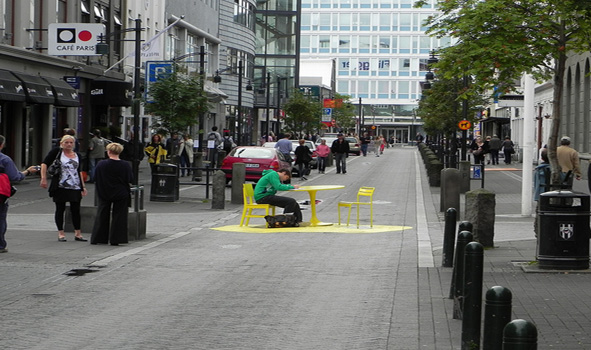
“I wish I had known that the main street in downtown Reykjavik is heated”
By the main street in Reykjavik, Laugavegur, you will find many stores and boutiques. What tourists don´t know is that in winter you can walk up and down the street without worrying too much about the snow and ice as the main street and the sidewalks are heated. I wish I had known that so I wouldn’t have gone shopping in my hiking boots!
“It would have been helpful to know how strong the sun is in winter”
Even though the hours of daylight in winter aren’t that many , the winter sun can be very strong so don´t under estimate it. If I had known that I would have brought some sunblock for my snowmobiling tour and sunglasses! I was though surprised how easy it was to find sunglasses and sunblock in Reykjavik in the middle of winter. I just went to the next pharmacy I found and got both.
Winter Wonderland
Up until quite recently, winter tourism in Iceland was almost unheard of. Most people thought the only time to pay us a visit was during the summer for the midnight sun. Now that some of the low cost airlines have started to fly in and out of Iceland, things have changed and more people are now discovering our magical winters too. Even though the winter is very dark and the weather can be wild, there is nothing quite like experiencing this country under the night sky, with northern lights dancing above you. It really is a winter wonderland.
There are dozens of fantastic things to do and places to see during winter. It’s important to plan ahead to make sure you can fit everything from your bucket list into your time in Iceland. We’ve put together some great lesser-known options for a winter trip that are sure to give you the best experience possible.
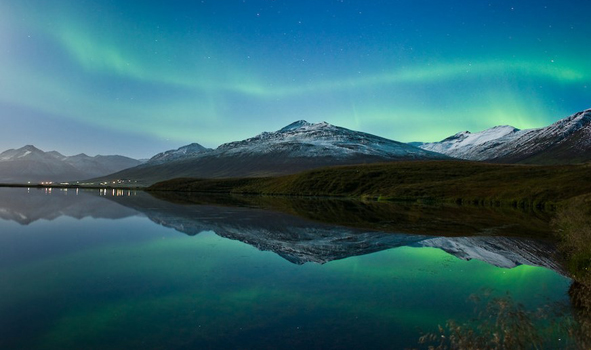
Multi-Day Super-Jeep Tour
For a truly unforgettable trip where you’ll be fully taken care of, a multi-day cross-country trip by 4×4 is a great adventure to take. You’ll experience every terrain Iceland has, from lunar lava fields to black sand beaches, cold glacial mountains to hot springs.
Typically lasting from 2 to 6 days (but can be longer upon request), this kind of tour is perfect for a small group of travellers who want to see as much as possible in an intimate time. Tour groups usually being 4 to 6 people and we use our own super jeeps and drivers.
Our expert tour guides have extensive knowledge and all the qualifications for your adventures in the country. These tours can also be arranged to take a variety of routes, depending on what sights you are interested in; Westfjords, south coast, highlands, etc. Private tours are great for flexibility. Contact us to find out more.
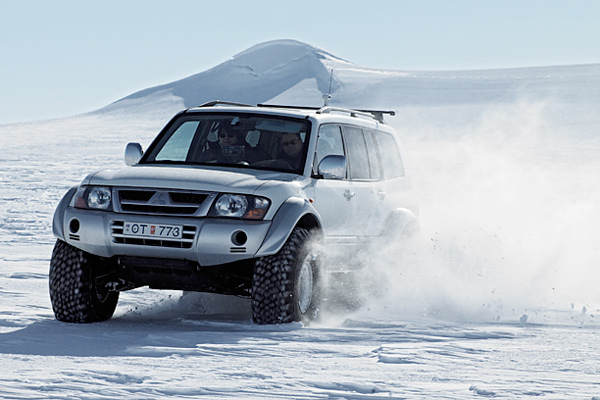
Jökulsárlón Glacial Lagoon & South Coast
The glacial lagoon,Jokulsarlon, on Icelands south coast is a place that truly has to be seen to be believed. No matter how beautiful a photograph you take, nothing compares to standing on its shore and taking it all in.
The lagoon is where icebergs, broken off from the great Vatnajokull glacier, float out into the Atlantic ocean. There is no better time to see it than in the depths of winter, when the icebergs are at their biggest and more dramatic.
Jokulsarlon is about a 7 hours drive from Reykjavik and makes a great 2 day trip, either by guided tour or self-driven. On the way to the lagoon, you will pass Seljalandsfoss waterfall where you can walk behind the waterfall, the beautiful Skogafoss waterfall, Reynisfjara black sand beach with its great basalt columns, and the site of the infamous Eyjafjallajokull volcano.
Time your arrival at Jokulsarlon right and you might get to see the northern lights reflect off the lagoon, surrounded by icebergs and seals playing. After you can stay in a number of lovely country hotels or guest houses in the region before returning to the capital the following day. We can help you book the perfect tour.
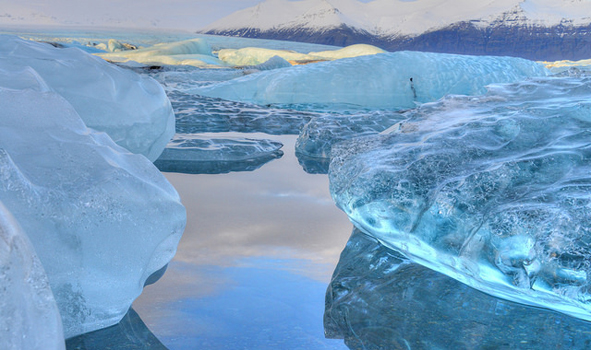
Lake Mývatn Winter Garden
Located in Icelands northeast highlands, this beautiful lake town is perfect to visit during the winter when its mild and peaceful.
The northern winters are lovely and scenic, Lake Mývatn in particular has some of the best natural sights and its remote location makes it perfect for looking for the northern lights. There is the great lava rock forest Dimmuborgir which was formed from an ancient volcanic eruption. Also make sure to check out the active hot spring field Hverir, the Lofthellir cave, Ludentarborgir crater rows, and of course, the lake itself!
Here you can also enjoy a soak at the Mývatn Nature Baths, the Blue Lagoon of the north, located up on a hill overlooking the lake. You can take a gourmet tour of the region trying all the local produce and visit the many farms of the area to taste real Icelandic country life.
Lake Mývatn is also known for being the mythical home of our thirteen Christmas elves, so it’s perfect for a great yuletide getaway.
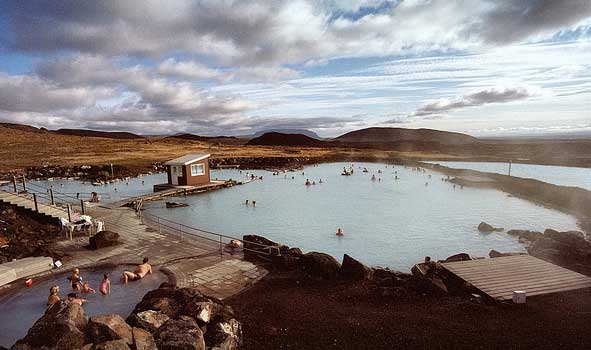
Getting Up On A Glacier
What could be better on a visit to Iceland than getting up close and personal with the glaciers that give us our name?
Going for a snowmobile ride on the second largest glacier, Langjokull (“long glacier”) is a thrilling adventure that will leave you with lifelong memories. Langjokull is located just a few hours out of Reykjavík and so makes for a great day trip. You need no prior snowmobiling experience and it’s family friendly, those without drivers licenses can be passengers. Snowmobiling trips can be tied into many other adventure packages or spend the evening on a hunt for northern lights.
If you want to get up on a glacier but snowmobiling isn’t for you, go for a climb instead on the Solheimajokull glacier on the south coast of Iceland. The trained guides provide all the gear and advice for trekking on the glacier. You’ll get a hiking experience like no other.
Surrounded by beautiful blue coloured ice, you’ll really feel Icelands magic. This glacier is also just a few hours from Reykjavik so can be easily combined with many other activities and tours. It’s always an option for a day out in winter as we can build it into your upcoming vacation.
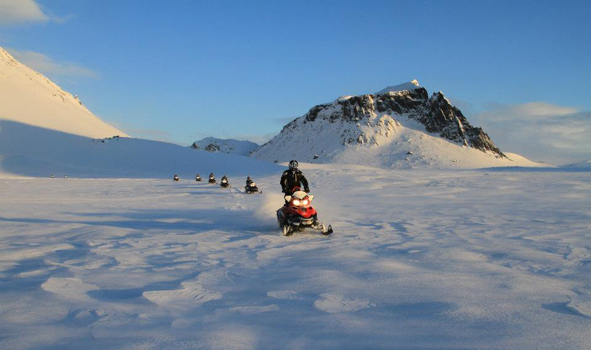
Going Down Into The Depths
While it’s really popular to climb to the highest peaks of the country to see Iceland from above, what lies below is not to be missed. The island is a geological marvel at every level and sometimes the best way to experience it is to go right inside it. There are several magnificent caves located right near Reykjavik that amateur speleologists can easily descend at any time of the year. Head to the Arnarker cave, Leidarendi cave or Thrihnukagigur crater to go down and experience the inside of this rocky island.
If you like water more than rocks, you’re in luck too. Head to the continental rift in the historic Thingvellir national park to go snorkelling in the Silfra river. This runs right between the North American and European tectonic plate divide. You’ll be provided with a dry suit and all the equipment by local guides who will take you on a gentle paddle through the place where the country splits into two continents. That is definitely something to check off your bucket list.
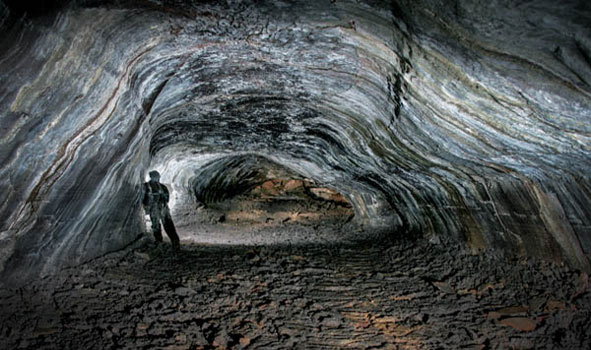
Welcome To Our Winter Wonderland!
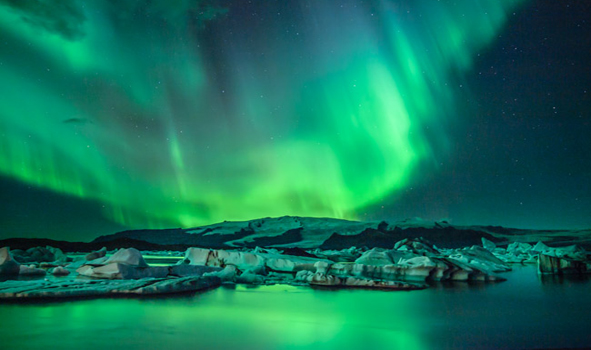
Northern Lights folklore and mythology: A collection of wonderous tales
Northern lights folklore and mythology have shaped our relationship with the aurora for centuries. Read on to experience a few of these stories, about what our ancestors believed the lights were trying to tell us.
Northern lights folklore and mythology across the world
One of outer space’s closest phenomena, the aurora has enthralled humanity for many generations. Cultures around the auroral oval (at both poles!) have crafted tales that influenced their ways of living, their idea of an afterlife, and the strategies that they utilized for warfare, survival, and worship. These were huge cornerstones in the lives of early people.
This attempt to understand an incredible force of nature is a thread that runs through many other ancient stories. You can imagine our ancestors grappling to live beside the power of volcanoes, terrible storms, thundering seas, and oddities that even today we struggle to comprehend. What vengeful gods were moving the Earth? What otherworldly exchange was taking place among them?
Auroral science is fairly fresh in the scheme of things, and it was not that long ago that we too puzzled at these lights in the night sky. Fortunately, we still have some of these stories to remember those early people by. And when you see an aurora for yourself, it is easy to see how these stories came about.
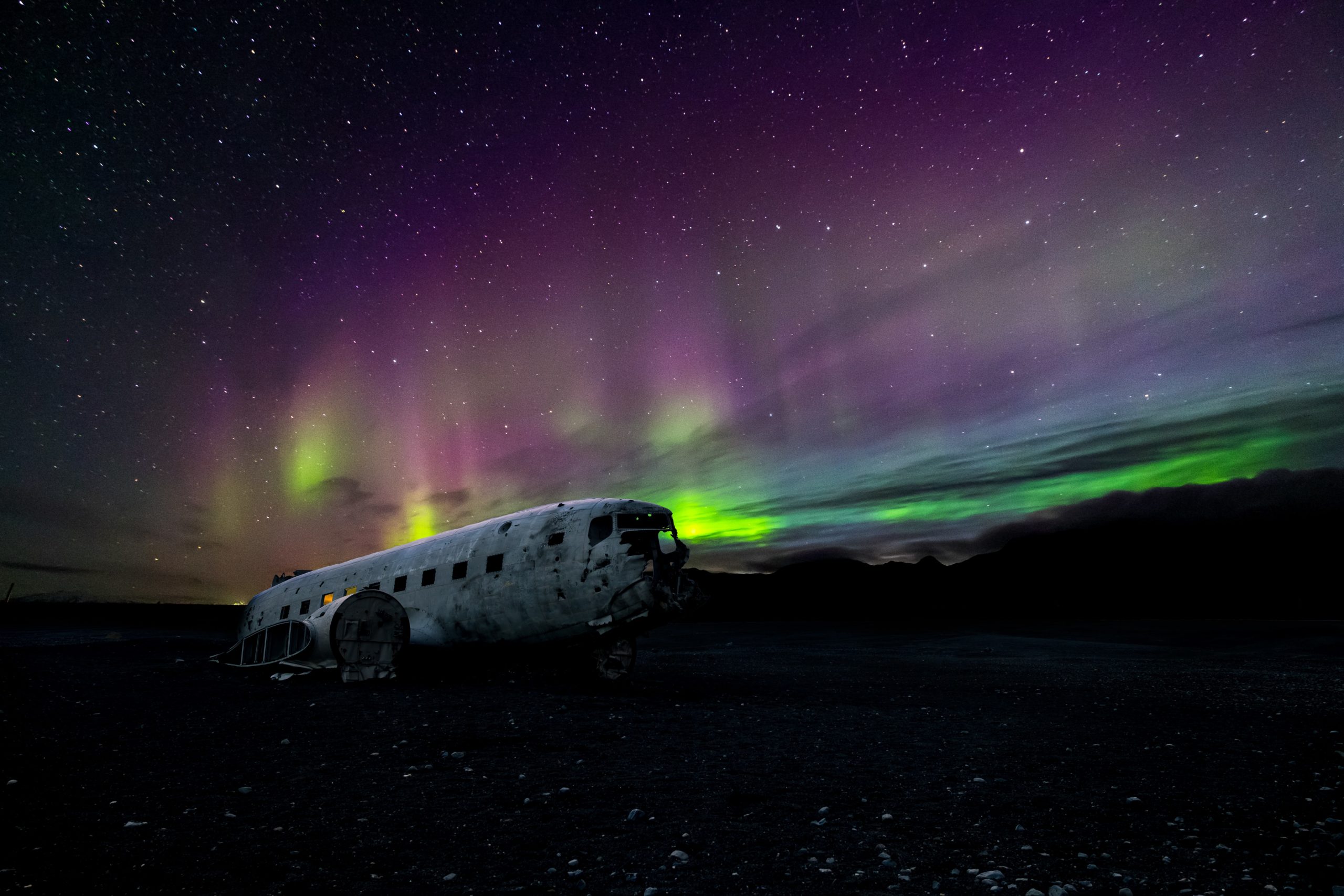
A thought to take with you on this journey
Oral folktales were humanity’s first way of conveying history, information, and news. Ancient peoples communicated this way, and passed these tales down in order to cement the foundation of their early cultures and beliefs.
Some of these stories were cautionary, some were fun, and others were deep wisdom crafted over many lifetimes. These stories were all meant to guide the living, sometimes even beyond the grave.
As you read forward, it is important to remember the medium of oral history, and how it worked. Some of these stories are nearly fossils, and some have changed and adapted over time. It may be possible that you know one of these stories in a different way, or even in a contrary way to how it is printed here.
The ultimate difficulty and gift of these tales is that both of those retellings can be correct.
Sometimes it is something as simple as a coastal dwelling people telling the story one way, and a more inland dwelling people telling it another- each within the same area of land! Some stories have changed details over time with many retellings, and some stories evolved differently depending on the groups of people telling them, and how they traveled.
A fascinating evolution of these stories lies in the movement of their people. With time, many more stationary groups of people moved and brought their cultures to faraway lands. In interactions like these, we can sometimes see the similarity or melding of stories, and in lands that share modern borders, we can sometimes see shared beliefs- similar to Russia and China, with their tales of great dragons.
The first storytellers that crafted these tales are long gone, but their legends have stood the test of time. An attempt to describe an incredible thing to our fellow man is at the core of the human experience, and it continues today.
As you read through these stories, feel free to share your knowledge of them with us. Have you heard them before? How were they different? Have you heard one that we don’t have recorded?
Part of the fun of these tales is in the telling, and the sharing of them- just like our ancestors would have done so long ago. Who knows what stories people will tell hundreds of years beyond us! In many ways, today’s magic is tomorrow’s science.
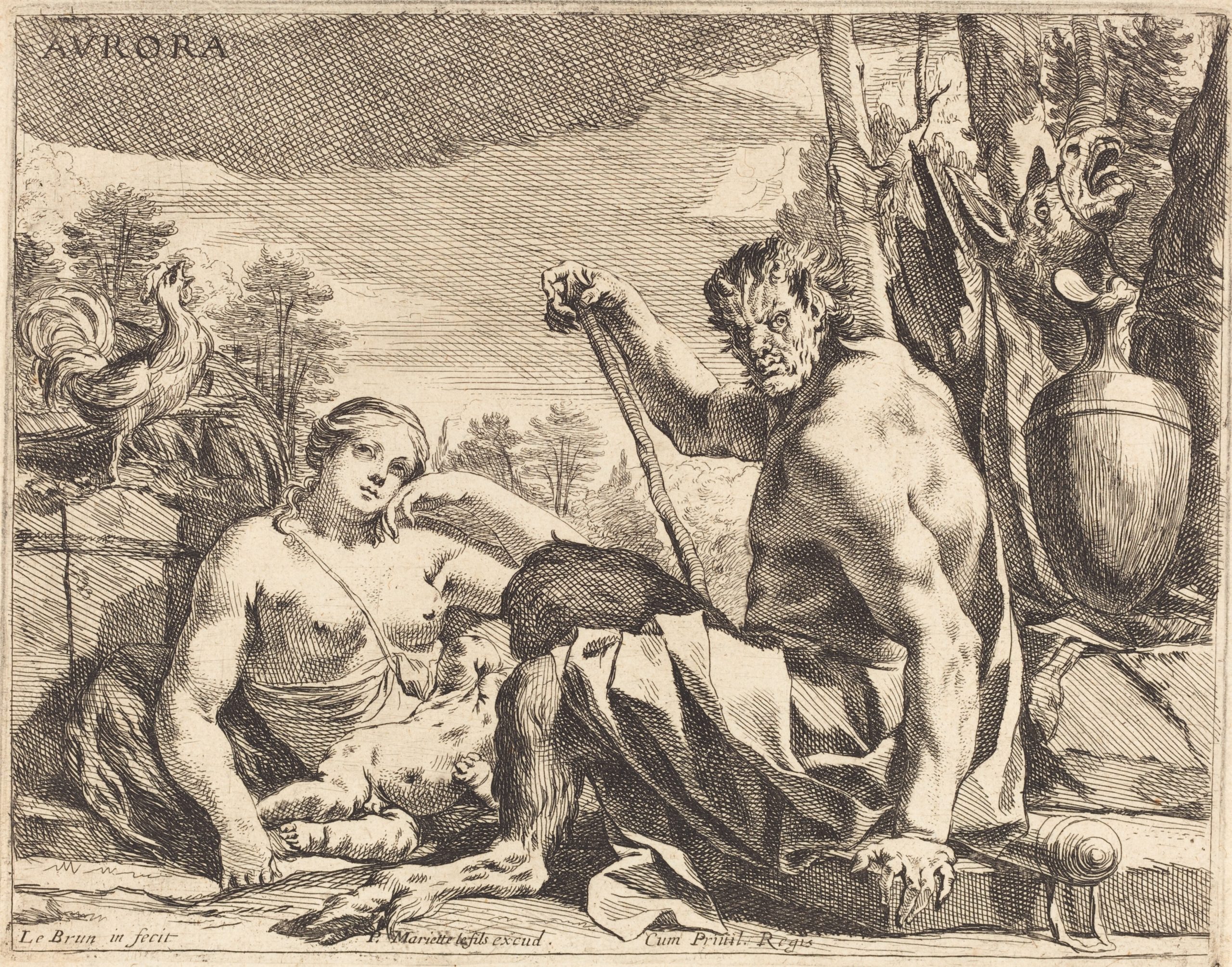
Italy: A name for the phenomenon
Though there are many recorded occurrences of possible auroral observance, the name that we use for auroras is credited to Italian astronomer Galileo Galilei. It is recorded that he saw the aurora in 1619 and believed at the time that they were rays of sunlight reflecting from the atmosphere.
He named the occurrence “aurora borealis” a Latin term referencing Aurora, the Roman goddess of the dawn, and Boreas, the Greek god of the northern wind.
To the Greeks, Boreas was the winged god of the north and the winter wind, and was one of the four seasonal Anemoi. You may recognize his name from the term ‘boreal’, which is a word that we commonly use to reference northerly places or the north wind.
(If we were discussing the southern pole’s aurora, we would call it aurora australis, or the southern lights.)
Galilei also included Aurora in this name, which has come to be the term that we use the most to reference this gift of nature. To the ancient Romans, Aurora was the goddess of the dawn.
Like many religious figures, she occurs in multiple polytheistic cultures by different names. Ēṓs in Greek, Uṣas in Rigvedic, and Hausos, the Indo-European origin from which she is thought to have come. (Being a bringer of light, it is not surprising to see her throughout the old religions of Europe, by the names of Aušrinė, Auseklis, and Ēastre.)
In the Roman belief, she was the sister of the Sun and the Moon, and the mother of the winds, or Anemoi. (Which gives the two words ‘aurora’ and ‘Borealis’ yet another interesting connection.)
Though the aurora was given these rich mythological names by Galileo, it does not necessarily mean that the ancient Greeks and Romans related auroras to these deities. Though a celestial occurrence, the stories behind these beings connect them primarily to the dawn and the northern winter wind.
In retellings of this story, individuals often name these cultures as applying their belief of the aurora to these deities, but it is important to note that it was Galileo himself that coined the name in 1619.
Greece and Italy lie below the Kp 9 region on the globe; making it unlikely that they would have regularly seen auroras, but certainly not impossible.
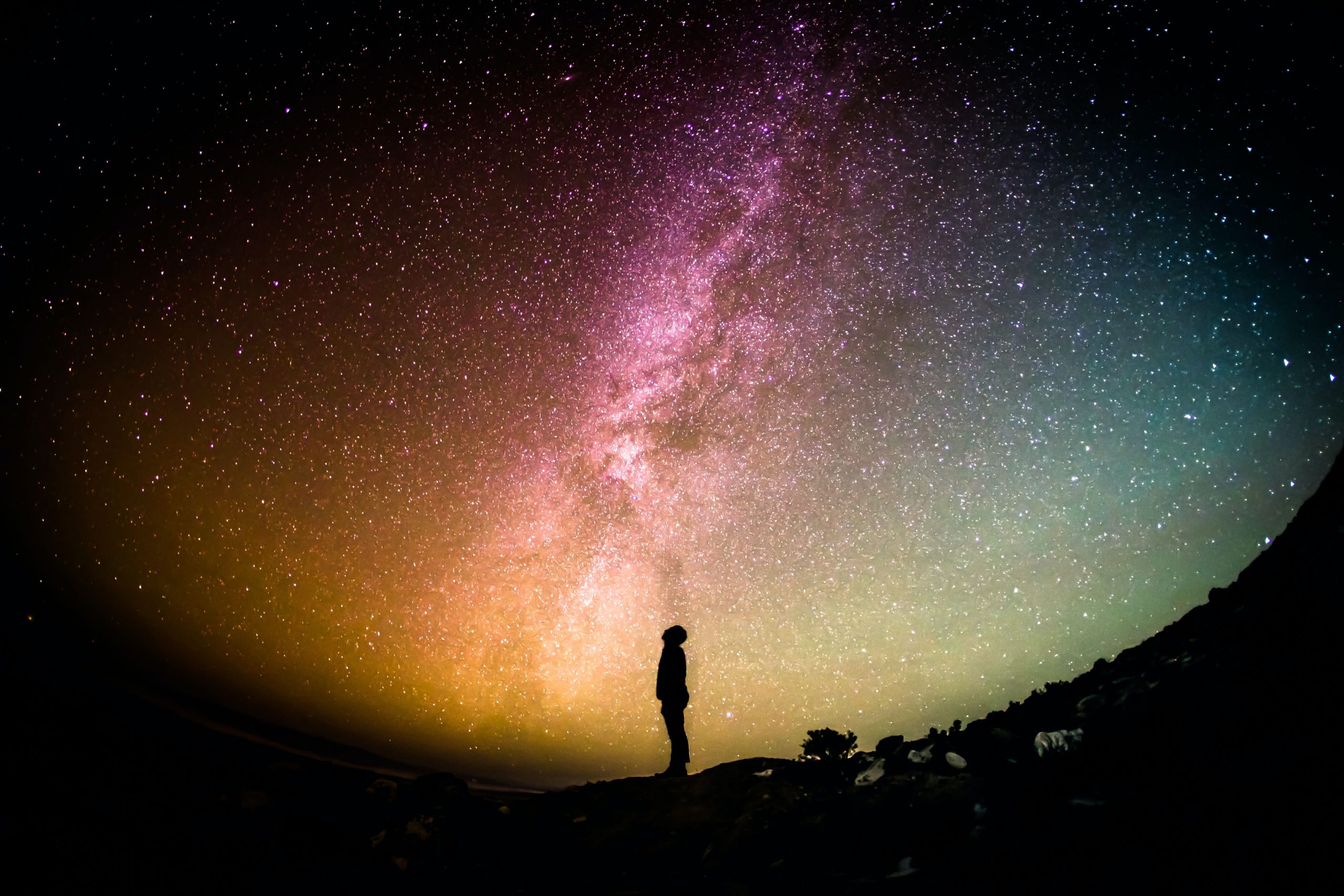
Early aurora observers around the globe
It is also interesting to note, that while Galileo is popularly credited with naming the aurora, he was not the only person watching the sky. History carries other stories of intrepid astronomers, some of which contest this claim.
Interestingly enough, a fellow sky observer and French philosopher, Pierre Gassendi is also credited in many publications as having named the aurora. He shared many of the same views and studies as Galileo, and may have seen the aurora as early as 1621.
Interestingly enough, he gave the phenomenon the same name. Due to written correspondence, some scholars wonder if they didn’t both see the same solar storm.
Despite this information, the truth is that the aurora existed long before there were people there to name it. According to NASA, one of the oldest existing mentions of auroral observance comes from China, in 2600 B.C.
This story is about Fu-Pao (Fubao) of the Youjiao Clan. It is said that she witnessed intense lighting moving around a star called Su from the constellation of Bei-Dou, lighting the entire area. In Chinese mythology, it is said that Fubao saw a “magical band of light” that caused her to become pregnant. She then gave birth to the Emperor Xuanyuan, a prominent figure in Chinese history and culture.
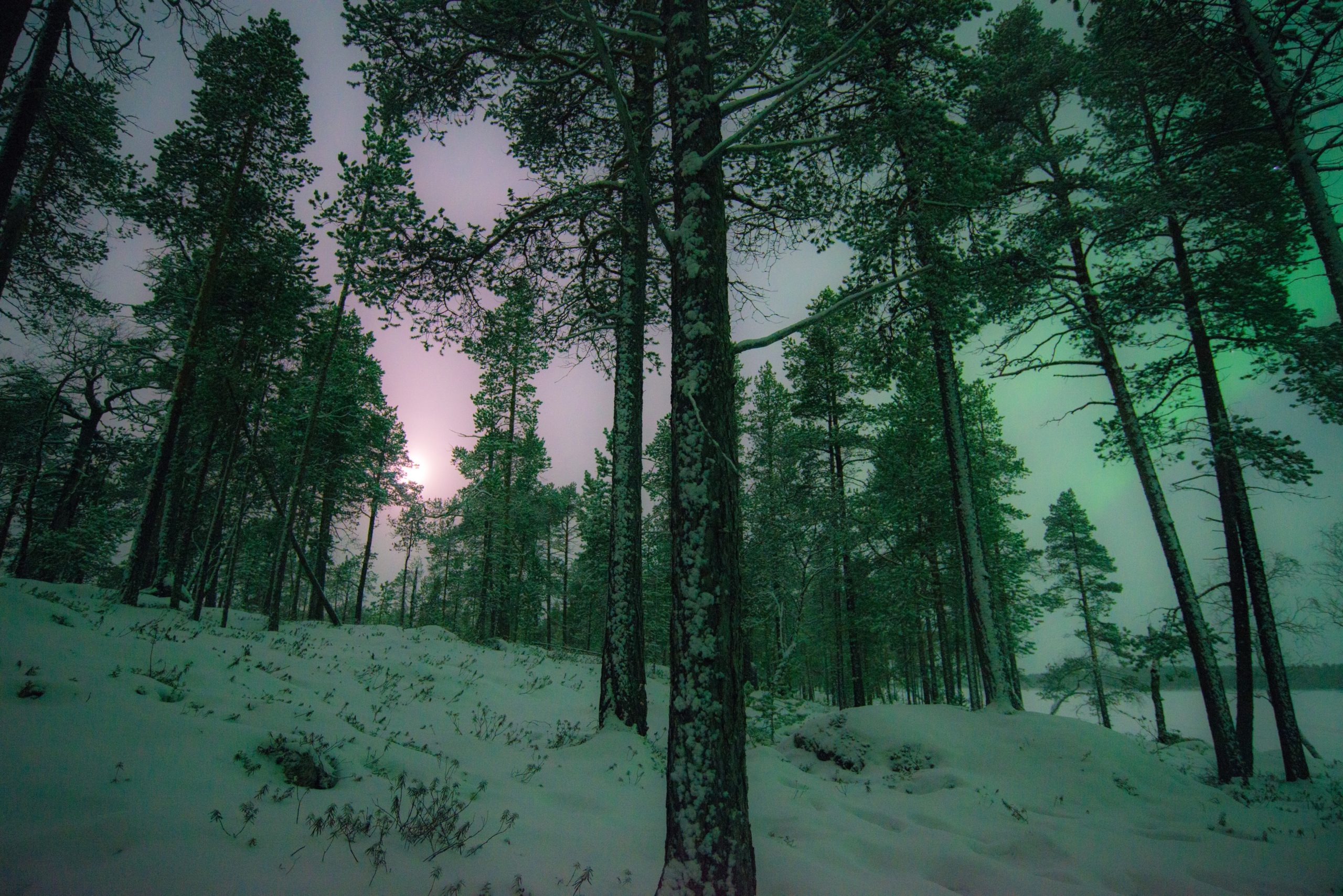
Below the oval: Lights in the heart of western Europe
Though rare, it is possible for strong auroral activity to make its way further down into mainland Europe and the continental United States.
We don’t typically relate northern lights with these areas, but in earlier times before the advent of electric light, dark skies were more readily available, and the mystery of the northern lights was a bit easier to see.
Stories from these regions have come from as far as the Middle Ages, though a few of them are as recent as the 1800’s. Many say that people in Western Europe considered the northern lights to be a warning, or a bad omen signaling oncoming hardship.
A sighting of the aurora could mean plague, death, or war. This may have been due to the colors people would have seen during these occurrences.
For the northern lights to reach so far from the pole, the strength of the activity would have been fairly high. Strong activity has the potential to take up more space in the atmosphere, and reach more pockets of nitrogen and oxygen- making it possible to create a more colorful show.
Typically auroral activity is green, but activity that reaches unusual heights can display rare colors like red and yellow.
This could explain why Europeans have anecdotally considered the light a harbinger of bad tidings or strife. We can begin to see this in the many tales of blood-red steaks in the sky before notable battles and events.
There are tales that the red lights were visible in the skies above Scotland and England weeks before the French Revolution. Some even say they saw auroras during the time of the Franco-Prussian war, which were believed to be reflections of the bloodshed that had happened there.
Among these tales are many others like them that coincide with fighting in Finland, Ireland, and even the United States. There are few cultures that we know of that have seen red auroras and did not imagine them as the voice of a vengeful god or a messenger of terrible news.
Auroras of any variety are magnificent, but it is not hard to imagine the fear that a red aurora must have inspired in older times. Even today, a red aurora is shocking to witness.
On a more positive note, not all Europeans saw doom in the face of the northern lights. The Scots, for instance, called the lights Na Fir-Chlis, ‘merry dancers’, and ‘the Nimble Men’. They believed that the lights depicted fallen angels or great warriors embroiled in an otherworldly battle.
The speed of their movements could also hint at oncoming weather. Quick, jagged movements could mean an unruly forecast, while fluid, slow movement could mean a calm and mild one. Many cultures used the skies to predict the weather, so it’s no wonder that they looked to the auroras as well as the stars and clouds.
But as proof of the dancer’s brawl, blood was shed upon Scottish earth. In the Hebrides, one can find Heliotrope or Bloodstones.
There are many stories about their origin, shared across many cultures- but some say that the specks of red in the green stones are the splashes of blood from the dancer’s battle. Blood spills from their onslaught and falls to earth as stones. A gift of nature, within another.
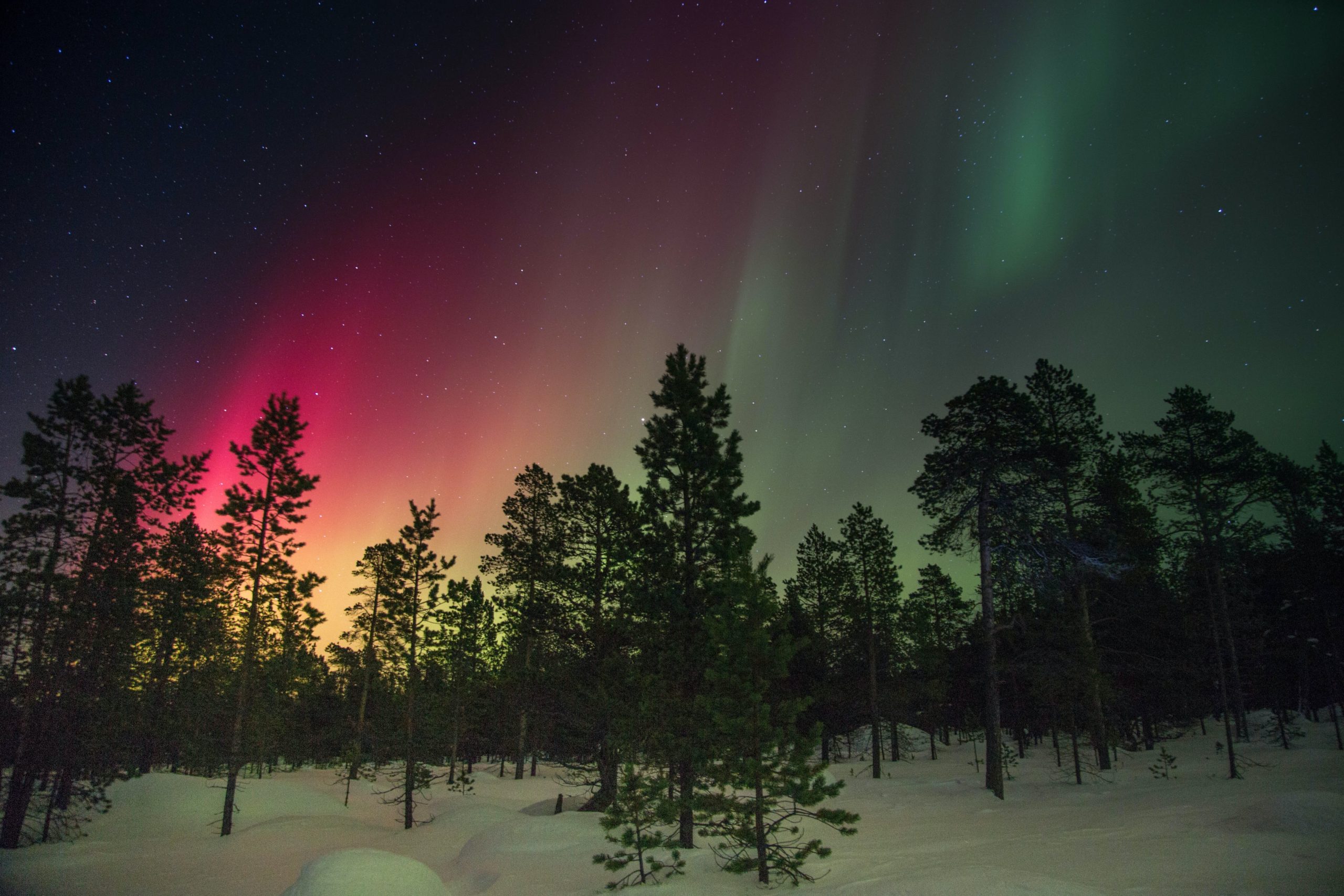
The Aurora Australis: fire in the southern skies
We do not have many tales about the Aurora Australis, as the majority of the land close to that pole has been uninhabited for much of history. (If those penguins could talk!)
But fortunately, on a good night, there are a few neighbors nearby. Most visibility of the Southern Lights occurs in Australia and New Zealand.
Indigenous Australians have many stories and beliefs that involve the dancing lights, even including a report of hearing noise during an occurrence.
This report took place in 1851 near the town of Hobart, where Indigenous peoples said that the aurora made a sound like “people snapping their fingers”. Today, some people do report hearing sounds during an auroral occurrence, but it is an aspect of the lights that is still being studied.
Many of these stories are interestingly similar to stories found in Native American cultures. The lights occupy an important place in storytelling, and the understanding of omens and ill tidings.
Often, the aurora was a message from a deity or a cosmic warning to stay in line. The Dieri believed that an aurora was a sign that someone was being punished for breaking the law.
This echoes in the story of hunters near Uluru killing a scared emu. This was an infraction of Pitjantjatjara law, so when they saw the aurora they knew that it meant punishment had come for them.
The Gunai people tell of a ancestor called Mungan Ngour, who put forth rules for men and their initiation into society. If people spoke of the sacred details of these proceedings, Mungan Ngour would send down fire from the heavens. This fire, was the aurora.
The color of the aurora could also be a key factor in the way that these stories evolved. For many Indigenous people, a red aurora could signal blood, or trouble.
Similar to stories from Europe, these crimson flashes could mean that a great battle was being fought in the sky, or that spirits were ascending to the heavens.
Many Indigenous people, like The Dieri and Ngarrindjeri people of South Australia, believed that the Southern Lights were great heavenly fires.
The Gunai people of eastern Victoria believe them to be bushfires in the realm of spirits, and harbingers of difficult times. While nearby, the Gunditjmara people of western Victoria call them ‘Puae buae’, which means ashes.
Further south, they say that the lights are the “feast fires” of the Oola Pikka, who are otherworldly beings that communicate to their Elders by creating the lights.
Even further south still, are the Maori of Aotearoa/New Zealand who call the aurora Tahunui-a-rangi, which means “Great glowing of the sky”. They say the Aurora Australis and believed them to be light reflected from the torches and campfires of their ancestors who had sailed south, and settled there.
The lights were proof that they had made it, and would return to them one day. Stories like this are told amongst the Algonquian people in North America, and are a comforting way to hold space for those in one’s life that have ventured far from home. Imagining the reflection from their home fires is a closeness that many never felt in life.
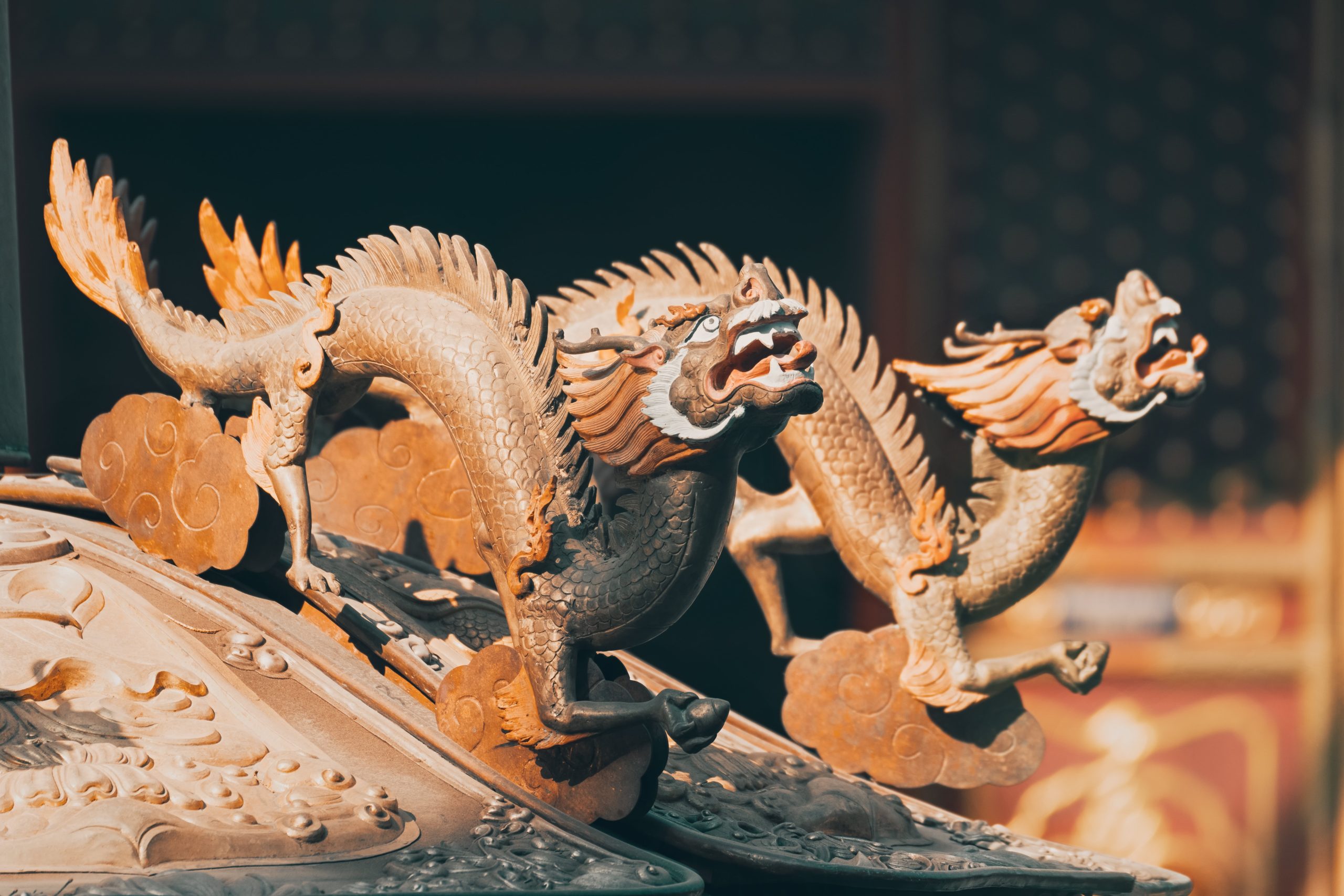
Ancient tales: glowing skies in China and Japan
Some of the oldest recorded work mentioning the Northern Lights comes to us from China. A place of copious art and text, China is a great source of preserved mythology and early science.
Many say that early depictions of colorful sky dragons and curved celestial serpents in historic Chinese media are meant to convey early sightings of the aurora.
This theory is reflected in the Shanhaijing (Shan Hai Jing), a recorded collection of mythical creatures. There are multiple serpents named in this book, including the Zhulong, mentioned in the “Classic of the Great Wilderness: North”.
Chinese scholar Ming Hua Zhang believed that this entry may be referencing the aurora, due to the description of the creature.
Described as red in color with a humanoid face and a serpentine body a thousand miles long, the Zhulong was said to be the deity of Zhong Mountain. With a name that means “Torch Dragon” in English, Zhulong was responsible for creating the day and night cycle, and also seasonal winds.
Descriptions similar to this come up in other ancient works and bestiaries, especially as there was not one central term to describe the phenomenon.
Instead, specific terms were used to describe the shapes that auroras made. These resulted in names like: “”Sky Dog (“天狗”)”, “Sword/Knife Star (“刀星”)”, “Chiyou banner (“蚩尤旗”)”, “Sky’s Open Eyes (“天开眼”)”, and “Stars like Rain (“星陨如雨”)”.”
It is interesting to note, that these stories of dragons are not specific only to China, but also their neighboring country, Russia. One can imagine how stories like this might develop and travel with the movement of people over time, growing and evolving throughout a region.
But dragons aren’t the only bearers of light in China! There are also stories about Fu-Pao (Fubao), the mother of the Yellow Emperor. Fu-Pao played an important role in Chinese culture, and it is said that looking upon the aurora (or possibly a bolt of lightning) is what caused her to conceive the Emperor himself.
Some say that it is a belief in China and Japan that a child conceived under the Northern Lights will have good fortune or be very beautiful, but there is not a great deal of proof that this is indeed a story that originates from these areas. Though, it would have many parallels with Fu-Pao’s story, if it were!
For visitors to China today, it is still possible to view the aurora in the northern city of Mohe. One can even visit the nearby town of Beijicun, the “North Pole Village”.
This area hosts a popular Polar Lights festival where thousands of people travel to test their luck at catching a glimpse- and perhaps even today, can be called a true home of dragons.
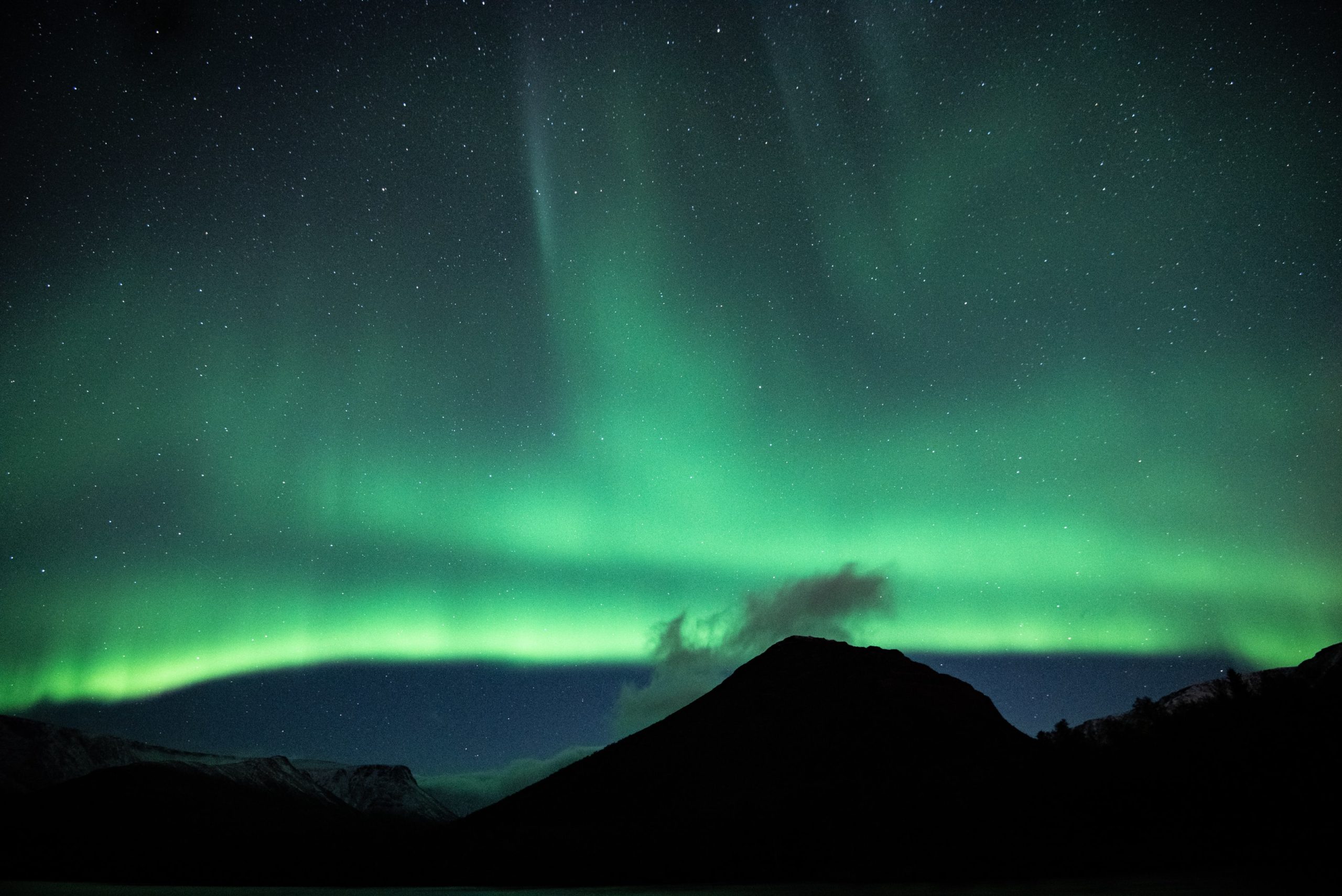
The vast skies of polar Russia: Here be Dragons
Across the way from nearby China, lies another land of dragons. Russia is home to a fan favorite as far as Northern Lights tales go, the story of the fire dragon that seduced a whole village.
This story seems to be told differently depending on the area you’ve heard it in, but the structure of it is much the same.
In the wintertime of the year, the menfolk would leave to hunt or participate in long-term battles. During this absence, the great sky dragon would descend and seduce all of the women who had been left behind.
Some versions of this story reference a watchman, left by the other men who had been charged with preventing this sort of trouble- but upon their return, he had to report that it was certainly not him who had fathered all of these children, but the great dragon himself! Which was cause for much celebration. Sounds like a myth within a myth, if you ask me!
Like many cultures, the wonder of the aurora is often linked with childbirth and the mysteries of existence. In Siberia, it is said that some people believed that children born under the lights would be blessed with a long and fruitful life.
The Chuvash people were also said to link the aurora to birth- but rather that it was proof that their god was busy helping women in childbirth.
There are many Indigenous stories as well that the lights may be past ancestors making merry or riding horses across the skies- sometimes accidentally spilling blood, and thus blessing people below with the aurora.
Stories like this are widespread across the globe, and it is interesting to see how ancient peoples used to believe that the aurora might be the byproduct of activity in a spirit realm- when we know today, that it is a byproduct of virulent weather in space. In some ways, these ethereal beliefs maintain some of their truth, even now.

Whale Watching Andrea
Whale Watching Andrea

- South Iceland

- Duration: 3-3.5 hours

- Difficult level: Easy
Come aboard and join the biggest whale watching boat in Iceland with Whale Watching Andrea Tour. Educational and fantastic inside and outside. With plenty of space for everyone, café and even a souvenir shop on board!
[shareaholic app="share_buttons" id="4832762"]
We will begin our Whale Watching Andrea adventure at the Reykjavik Old Harbour. It can be reached just few minutes from the city center so you won't miss it. Whale Watching Andrea boat offers great comfort, a fantastic interior, large outside viewing decks and a safe family environment.
As the vessel departs Reykjavik Old harbor, one of our highly trained tour guide will give an "educational and interactive" focus about the whales we may see, their behavior and some of the other marine life common to the area. Posters, interactive tools and other materials are used to further illustrate the various whale species, behaviors and interesting facts on the biology and geology of the area. You can get to feel objects such as baleen plates, whale teeth and whale bones. These bring a new level of understanding to many of our first time passengers of how these magnificent animals adapt and survive. The ocean will come to life in front of us as you will learn about each specimens that will be shown from our friendly and knowledgeable tour guides and these experience makes our Whale Watching Andrea tour a one of a kind tour.
The tour guide along with our friendly captain will point out where you will be able to spot the whales that are mentioned.
One of our favorite whales sighted throughout the year is the Mink Whale. Our tour guides conduct researches on the whales seen, photographing each whale to be identified and studied every now and then. Once the research is completed,it is being put into our database and openly shared with other interested scientists, as well as those naturalist including schools and organizations and of course to all of our interested passengers just like yourself. Mink whales are not the only species sighted. Some of the others are Harbor Porporise, White-beaked Dolphin and Humpback Whale. The fun thing is that we may even stop to see a fish or two. The Arctic ocean is a rich environment that attracts and supports both residents and transient marine life.
Unlike many other whale watching tours that are often offered here in Iceland, our trips offers a wide spectrum of educational tools that go beyond the "average whale watch". The tours offered are well designed to enhance our awareness of whales, as well as the other marine life and the marine habitat that surrounds Iceland. Our goal is for you to depart our boats with a greater understanding and appreciation of the Icelandic marine sanctuary and the abundance of life it supports. We make each trip fun and educational for everyone at all ages and excellent for bigger groups and families! So get aboard and let the fun begin. Join our Whale Watching Andrea.
DETAILS
AVAILABILITY:
Daily departures all year
DURATION:
3-3.5 hours
INCLUDES:
New, luxurious and fast whale watching boat WITH 90% VIEWING SUCCESS, free ticket for the next tour if no whales are spotted on the first one, and experienced guides and crew.
PLEASE NOTE:
Please bring warm clothing as the weather in Iceland is unpredictable and it is always colder out in the open sea. You can borrow warm overalls on board if you get cold.
OTHER USEFUL FACTS:
Drinks & Snacks bar on board, Souvenir shop and wireless internet on board.
Adventures on the sea
Adventures on the sea
When you visit Iceland the selection of tours is massive, both on land and sea. Here we are going to introduce you the magic the ocean has to offer and give you an idea for tours available.
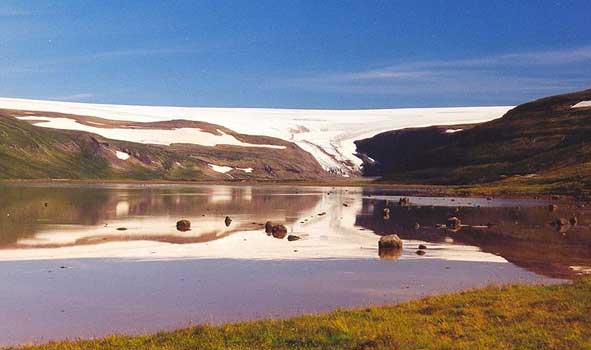
Whale watching
The whale watching tours are always popular and it is truly magnificent to see the whales in their natural environment. Usually you can see them quite up close, either the boat approaches them slowly or the whales themselves get close to the boat. The viewing success rater is 90% and dolphins often show up as well.
You can go whale watching on the northern coast during summer but the tours run all year from the Old harbor in Reykjavík. There you can choose between the largest whale watching boat in Iceland, Andrea, or a fast luxurious boat (so-called whale watching express). The types of whales you can expect to see include Mink whale, Gun whale and Humpback whale. Whale watching is an adventure for everyone and in summer you might see puffins as well!
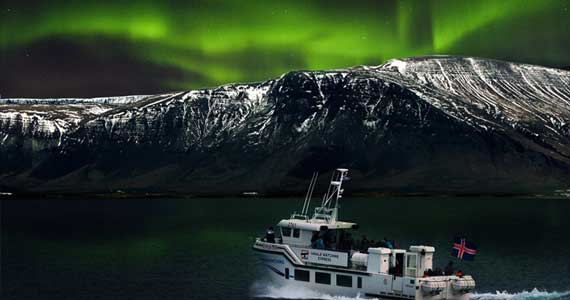
Sea Angling
Sea angling adventures are offered from the beginning of May until the end of August. Each tour is 2.5- 3 hours long and departure is from the Old harbor in Reykjavík in the afternoon. All necessary equipment is on board. After having enjoyed the view of Reykjavik and Mt. Esja and caught fish, and sometimes we spot whales as well on the tour, the tour guides will BBQ the fish you caught. The most common fish caught is cod and halibut. So, on your way back to the harbor you enjoy a lovely meal and view. This is a tour all age groups enjoy and we can easily recommend.
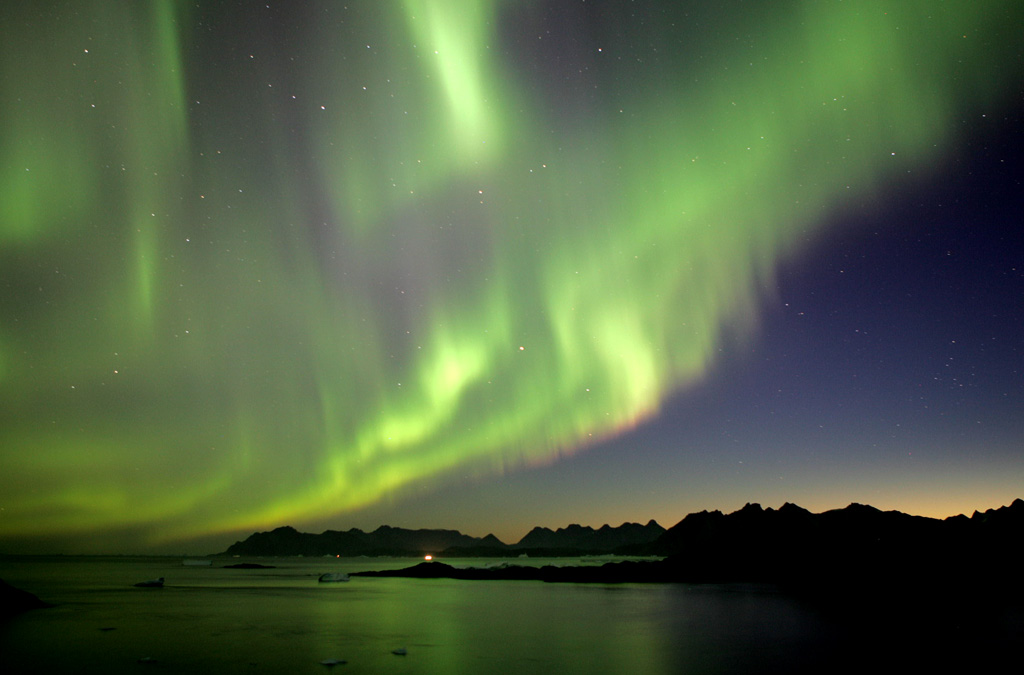
Northern lights by boat
There are several tours offered for northern lights hunting. One option, not too many know about and is a hidden gem, is northern lights hunt by boat. The boat departs from the Old Harbor in Reykjavík and you sail out to Faxaflói bay. There you have a lovely panoramic view of the capital, Reykjavik, but you are also far away from the city lights. That means that you can enjoy the northern lights out in the sea where it is pitch dark but with the city lights as a background. Now, how amazing is that!
Puffins
Puffins
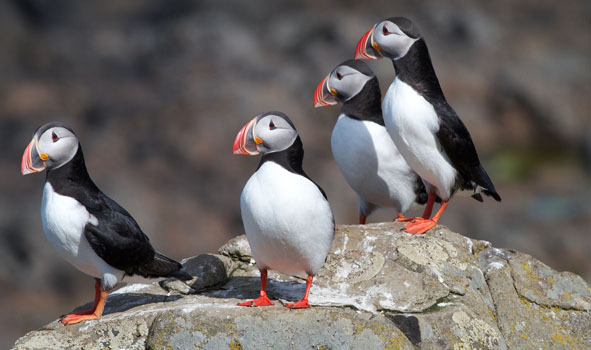
The puffin is truly a unique bird that is fun to watch and explore. On many of the boat tours during summer you also see puffins. You can read more about puffins here. All ages love and enjoy to see this little but lovely and beautiful bird flying around and nesting.

